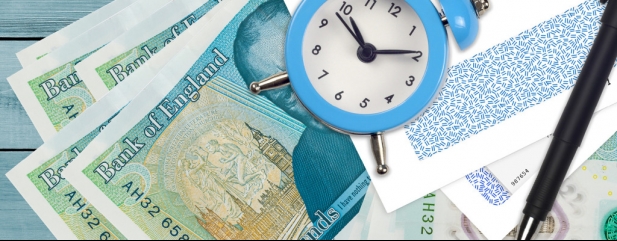Archived article
Please note that tax, investment, pension and ISA rules can change and the information and any views contained in this article may now be inaccurate.
Everything you need to know about pensions tax relief

Successive governments have encouraged saving for later life by offering the financial incentive of not paying income tax on money paid into a pension plan.
Pension tax relief boosts pension savings and the final amount available to retire on, thereby increasing the chance of a decent income to live on in later life. Therefore, fewer people are likely to fall back onto state benefits.
It’s a valuable incentive and it’s worth understanding how it works in practice.
CAN EVERYONE GET PENSION TAX RELIEF?
You must be a ‘relevant UK individual’ to qualify for relief. The definition is a bit complicated, but this is generally someone who:
– has ‘relevant UK earnings’ (see below for what that means);
– has been resident in the UK at some time during that tax year, or;
– was resident in the UK at some time during the previous five years.
You can only receive pensions tax relief on contributions up to the age of 75. Some providers will still accept pension contributions after that age, but some won’t.
HOW DO I GET THE PENSION TAX RELIEF?
How you get your pension tax relief depends on the type of pension plan you are paying into.
If you are paying into an employer’s defined benefit scheme the scheme will operate pension tax relief by the ‘net pay method’. This is also the case for some defined contribution workplace pensions.
This is when your employer will take your pension contributions from your salary before it’s paid to you; after National Insurance has been taken off, but before any income tax is deducted. That way you receive the pension tax relief immediately.
Other types of pension schemes – including SIPPs – operate a ‘relief at source method’.
Under this method you will pay pension contributions from ‘take-home’ salary – in other words National Insurance and income tax have already been deducted. When you pay into your pension the provider claims the basic rate tax relief at 20% from HMRC, and this is paid directly into your pension plan.
To work out your 20% basic rate tax relief calculate 25% of your pension contribution.
Example:
Raj pays £1,000 into his SIPP. His provider claims back the basic rate tax relief from HMRC. This is £250 and added to his pension pot. Raj’s pension plan is now worth £1,250.
(In effect the £1,000 paid in is £1,250 salary less 20% tax that is then reclaimed.)
WHAT HAPPENS IF I DON’T PAY 20% TAX?
The relief at source method may make sense if you pay tax at the basic rate of 20%. But not everyone does.
Those who pay a higher rate of tax can claim the difference between that and 20% by claiming it through their self-assessment or by getting in touch with HMRC (additional rate taxpayers must use self-assessment). The amount of tax they owe to HMRC will automatically be adjusted to take account of this additional tax relief, or a refund may be paid.
If you don’t have any relevant UK earnings – perhaps because you are unemployed or a student – then you can still receive the automatic 20% basic rate tax relief for a net contribution of up to £2,880 every tax year, meaning your total pension contribution with tax relief would be £3,600.
For example, grandparents could pay £2,880 into their grandchild’s Junior SIPP each year, and it would be boosted to £3,600 by the addition of pensions tax relief. Those whose earnings are within the personal allowance can also receive the automatic relief even though no tax is actually paid if their scheme operates relief at source.
Example:
Emily earns £60,270 in the 2021/22 tax year and pays 40% tax on £10,000. She pays £15,000 into a SIPP.
She automatically gets relief at source on the full £15,000 at 20%. She can claim an extra 20% on £10,000 (the same amount she paid higher rate tax on) through her self-assessment tax return. She doesn’t get further relief on the remaining £5,000 paid into her pension (as this is the proportion she only paid basic rate tax on).
Scottish residents pay different rates of income tax, so they can claim different rates of pensions tax relief. They can claim further tax relief of 1% (if they pay 21% tax), 21% (if they pay 41% tax) and 26% (if they pay 46% tax). If they pay 19% tax they can receive the automatic 20% tax relief on the whole of their contribution (up to the limits allowed – see below).
IS THERE A LIMIT ON THE AMOUNT OF TAX RELIEF I CAN RECEIVE?
There are a couple of limits to be aware of when it comes to pensions tax relief.
First, personal contributions which can receive tax relief are limited to 100% of your relevant UK earnings. Generally, all earned income, such as pay, bonus, overtime and commission, qualify as relevant earnings. But investment income and dividends are not included, nor is income from pension products such as an annuity or income drawdown.
HMRC rules allow contributions to be paid which are more than 100% of UK relevant earnings without tax relief, however your provider may not accept them.
WHAT IS THE ANNUAL ALLOWANCE?
Second there is the annual allowance. If your total contributions – including any tax relief, employer contributions, and any contributions paid to your pension plan by a third party – exceed the annual allowance then a tax charge applies.
The standard annual allowance is £40,000. But if you are a very high earner then the tapered annual allowance will apply. That will reduce the annual allowance, potentially as low as £4,000 (if you have an income of more than £312,000).
If you have ‘flexibly accessed’ your pension plan – for example you have taken a taxable income from it – then the money purchase annual allowance will be triggered, and this is only £4,000 per tax year.
If your total contributions are over and above your annual allowance, then you will have to pay an annual allowance charge. You cannot get a refund of contributions simply because you breached the allowance. You must report the charge through your self-assessment, in certain circumstances you can ask your pension scheme to pay it for you.
IS THAT IT FOR LIMITS?
It’s worth being aware there is another big limit for pensions – the lifetime allowance. Your pension funds are tested against this limit when you take benefits, reach age 75 or if you die earlier without accessing all your funds. The lifetime allowance is currently £1,073,100 and will be frozen for the next five tax years (although you may have a higher lifetime allowance if you have claimed protection.)
If you exceed your lifetime allowance, then there will be a charge on the excess amount.
ARE THERE ANY OTHER TAX INCENTIVES FOR PENSIONS?
There are other valuable tax incentives associated with pensions. Once contributions are invested, they grow largely free of taxes until you decide to draw your retirement benefits. When you do, 25% of the pension pot can usually be paid as tax-free cash.
The remaining 75% is taxed as income when you take it. But you could have the freedom to decide how and when to take the money to make sure it’s tax efficient.
Pension pots are usually sheltered from Inheritance Tax (IHT). If you die before age 75 then any income or lump sums taken from your pension pot by your beneficiaries will usually be free of income tax. Although, if you over 75 when you die then they will have to pay income tax on the money they receive.
Employer pension contributions are treated as a legitimate business expense, so no tax is due on them.
HOW DOES PENSION TAX RELIEF COMPARE TO THE LIFETIME ISA BONUS?
Lifetime ISAs allow payments in of up to £4,000 a year, with each payment benefitting from a 25% Government bonus. In practice this is exactly the same as basic-rate pension tax relief
You must be aged 18-39 to open a Lifetime ISA, and once opened you can keep paying in up to £4,000 annually and receiving the 25% bonus until the day before your 50th birthday, regardless of your income tax band. You can then withdraw the money tax free if it’s being put towards a first home worth £450,000 or less, from your 60th birthday, or if you become terminally ill.
In all other circumstances the Government will levy a 25% early withdrawal charge.
Like a pension, investment growth is tax-free in a Lifetime ISA.
From a tax angle Lifetime ISAs represent a viable alternative to pensions for basic-rate taxpayers, benefitting from the same upfront bonus on the first £4,000 paid in but being able to take the whole fund tax free (albeit a few years later than a pension).
Lifetime ISAs also offer extra flexibility as you can access the money at any age (subject to an early withdrawal charge). For higher and additional-rate taxpayers, pensions mean higher tax relief.
But be aware: by choosing not to pay into a pension you may lose your valuable employer pension contributions, and that will seriously impact your later life savings. As ever, it all depends on your personal circumstances.
Important information:
These articles are provided by Shares magazine which is published by AJ Bell Media, a part of AJ Bell. Shares is not written by AJ Bell.
Shares is provided for your general information and use and is not a personal recommendation to invest. It is not intended to be relied upon by you in making or not making any investment decisions. The investments referred to in these articles will not be suitable for all investors. If in doubt please seek appropriate independent financial advice.
Investors acting on the information in these articles do so at their own risk and AJ Bell Media and its staff do not accept liability for losses suffered by investors as a result of their investment decisions.
Issue contents
Feature
Great Ideas
- Continental is a great play on electric vehicles
- Activist pressure to give fresh impetus to Aviva shares
- Latest evidence of reading boom and special dividend lift Bloomsbury
- Belvoir is a great way to invest in the booming property market
- DiscoverIE delivers on raised forecasts and sees return to growth

 magazine
magazine








